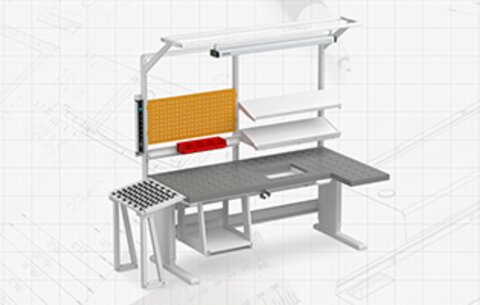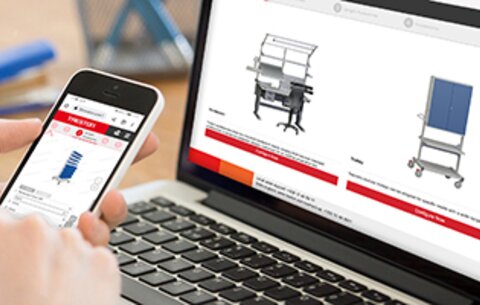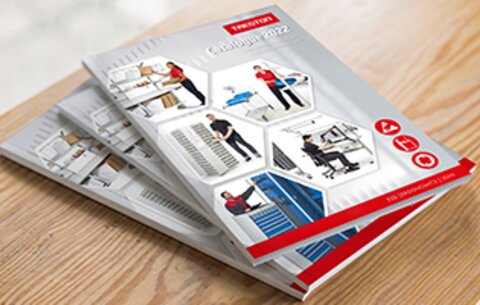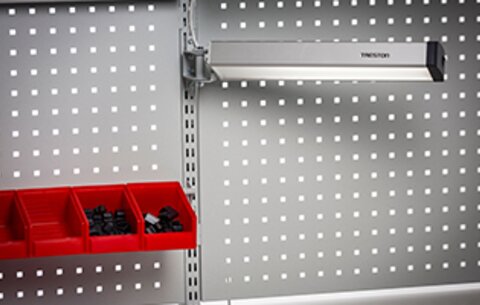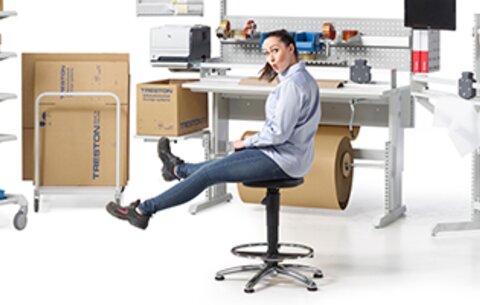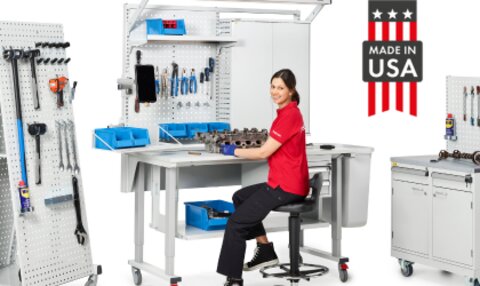

How EHS Managers Can Get Workers to Care About Ergonomics
From the worker’s perspective, they may not prioritize ergonomics because they haven’t experienced an injury—yet. They’ve likely been doing the job the same way for years, and change can feel unnecessary or even frustrating. After all, they just want to get the job done and move on with their day. However, what’s often overlooked is that poor ergonomics can lead to long-term issues that affect not just their ability to work but also their quality of life outside of work. This disconnect leaves managers stuck in a cycle of reacting to injuries instead of preventing them. The good news is that with the right approach—such as regular ergonomic assessments, the right tools, and ongoing support—you can create a win-win: safer work environments for employees and fewer injuries for the company.

1. Make Ergonomics a Key Part of Onboarding and Training
One of the best ways to integrate ergonomic practices into a workplace, especially one with significant turnover, is to make ergonomics a foundational part of the onboarding process. Ergonomic assessments and training should be part of every new employee’s orientation, regardless of how long they plan to stay with the company. This ensures that everyone understands the importance of maintaining proper posture, lifting techniques, and workstation setup from the start.
Conducting ergonomic assessments during onboarding can help employees personalize their workstations to fit their needs, reducing the risk of strain and injury early on. Even short-term employees can benefit from this approach, as it helps them work more comfortably and safely.
Tip for Managers: Include ergonomic training as a mandatory part of the onboarding process. Ensure that all new employees receive ergonomic assessments to set up their workstations properly. By starting off with the right posture and tools, employees can avoid discomfort and improve productivity from day one.
2. Equip Workers with Ergonomic Tools and Reinforce Their Use

Providing the right ergonomic tools is essential for helping workers maintain healthy habits over time. Tools like ergonomic mats, adjustable chairs, and wrist supports can make a big difference in reducing physical strain and promoting proper posture. However, simply giving employees these tools isn’t enough—ergonomics only works when the tools are used correctly. For example, an ergonomic chair is only effective if it’s adjusted to fit the worker’s body, and the same goes for ergonomic workstations. Ergonomic setups need to be customized and regularly adjusted as workers' needs change.
To reinforce these practices, ergonomic tools should be paired with ongoing reminders. Visual aids, such as posters, tip sheets, or instructional videos, can remind employees to adjust their workstations and maintain proper posture. These reminders help keep ergonomics top of mind, ensuring that workers don’t fall back into bad habits.
Tip for Managers: Provide workers with ergonomic tools that are easy to adjust and fit their specific needs. Use visual reminders, like posters or quick reference guides, to reinforce key ergonomic practices. Pair these tools with regular ergonomic assessments to make sure employees are using them correctly and staying safe on the job.
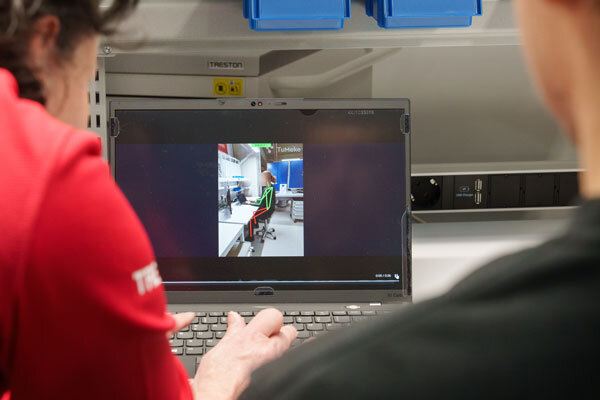
3. Conduct Regular Ergonomic Assessments to Ensure Long-Term Safety
While an initial ergonomic assessment is important, regularly conducting assessments is essential for maintaining long-term safety and preventing injuries. Workers can develop or revert to poor habits over time, and their physical needs may change. Periodic ergonomic evaluations help ensure employees are maintaining healthy postures and minimizing strain, reducing the risk of musculoskeletal disorders and other long-term health problems.
Tip for Managers: Establish a routine schedule for ergonomic assessments—monthly or quarterly “check-ups” to ensure employees are consistently working in optimal positions. Use these assessments to adjust workspaces as needed. Tools like Treston’s ErgoID® AI-based assessment service make these check-ups quick and easy, minimizing any disruption to the worker.

4. Foster a Culture of Safety and Well-Being with Ergonomics
To truly get workers to care about ergonomics, it needs to be part of the company’s broader culture of safety and well-being. When employees see that ergonomics is a continuous focus, not just a one-time effort, they are more likely to adopt and maintain good practices. Making ergonomic assessments a regular part of workplace safety discussions can foster an environment where workers feel their health is valued.
Managers should integrate ergonomics into broader wellness programs, safety talks, and team meetings. This reinforces the message that the company prioritizes the physical well-being of its workforce. By promoting ergonomic best practices and encouraging employees to take responsibility for their own comfort, managers can foster greater job satisfaction and retention.
Tip for Managers: Incorporate ergonomic assessments into your company’s safety culture. Discuss ergonomics during safety meetings and make it part of ongoing wellness initiatives. Creating a culture of continuous improvement around ergonomics helps employees see the long-term benefits of protecting their physical health.
5. Incentivize Ergonomic Compliance and Engagement

Encouraging employees to adopt ergonomic best practices can be more effective with an incentive program. Since the benefits of ergonomic assessments and improvements aren’t always immediately visible to workers, offering rewards can help motivate them to engage more actively. An incentive program can make ergonomics a higher priority and foster long-term participation.
A well-structured ergonomic incentive program might look like this:
- Recognition Program: A monthly or quarterly recognition of employees who consistently follow ergonomic guidelines. This could be done during team meetings where the employee is praised in front of their peers, creating a sense of achievement, and reinforcing the importance of ergonomics.
- Point System: Employees earn points for participating in ergonomic assessments, attending ergonomic training sessions, or making improvements to their workstations. These points can be accumulated and redeemed for rewards like gift cards, company swag, or even extra break time.
- On-the-spot Rewards: Managers can offer on-the-spot rewards for employees who demonstrate excellent ergonomic practices. This could be something small but immediate, like a coffee gift card, encouraging workers to stay mindful of ergonomics throughout their day.
Incentives are especially valuable in workplaces with frequent turnover, as they encourage both new and long-term employees to stay engaged in their own safety and comfort. By seeing that the company values ergonomic compliance, employees are more likely to take ownership of their work environment and develop safer, healthier habits.
Tip for Managers: Design an incentive program that rewards employees for participating in ergonomic assessments and maintaining ergonomic best practices. Use rewards to motivate continuous improvements, creating a safer and more comfortable work environment for everyone.
Conclusion
Ergonomics is all about making work safer, more comfortable, and more productive for everyone. By following these simple strategies, you can make ergonomics something your employees care about and embrace. Regular ergonomic assessments, along with the right tools, training, and a little bit of encouragement, are proactive steps that keep your team feeling their best. When ergonomics becomes a natural part of your safety culture, you’re not just preventing injuries—you’re also boosting morale and productivity.
When your employees see that ergonomics improves their daily comfort and supports their long-term health, they’ll be more motivated to stick with it. The result? Fewer injuries, less time off, and a happier, more productive workforce. With the right approach, you’ll create a workplace where safety and efficiency go hand-in-hand—and everyone wins.

